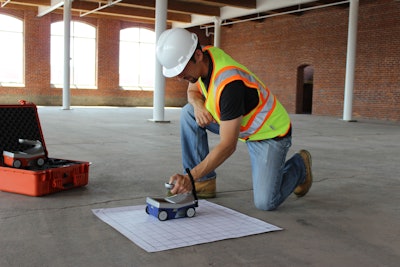Extensive Insights right into Concrete Scanning Procedures
Extensive Insights right into Concrete Scanning Procedures
Blog Article
Introduce the Transformative Power of Concrete Scanning in Making The Most Of Performance and Security
Concrete scanning has actually arised as an essential tool in the construction market, using unmatched advantages in improving project performance and ensuring safety and security standards. The transformative power of concrete scanning lies in its capability to offer thorough insights and real-time information, changing exactly how tasks are planned and executed.
Value of Concrete Scanning
Ensuring the structural stability and safety of building and construction jobs begins with the vital step of conducting thorough concrete scanning. Concrete scanning is a non-destructive method used to spot and map subsurface elements within concrete frameworks.
Furthermore, concrete scanning helps in enhancing project timelines and budget plan by preventing unexpected prices and delays that may arise due to unexpected obstructions within the concrete. Eventually, spending in extensive concrete scanning is an aggressive strategy that improves both performance and safety and security in building tasks.
How Concrete Scanning Functions
Concrete scanning runs as a critical tool in building tasks by utilizing advanced innovations to detect and map subsurface elements without triggering architectural damages. Ground Passing Through Radar (GPR) and Electromagnetic Induction (EMI) are two primary methods used in concrete scanning. GPR jobs by sending out high-frequency radar pulses into the surface, which jump back when they come across subsurface objects or voids. The time considered the signal to return shows the depth and location of the items. EMI, on the other hand, uses magnetic fields to identify variances in material compositions, such as determining rebar or avenues within concrete structures.
Throughout the scanning procedure, the data collected is examined in real-time, permitting prompt recognition of potential risks or challenges below the surface. By employing these sophisticated innovations, concrete scanning substantially reduces the threat of costly problems and injuries on building websites.
Advantages of Concrete Scanning
One of the key advantages of concrete scanning is the capacity to discover and locate embedded items such as rebar, post-tension wires, and avenues accurately. Concrete scanning aids in preparation and developing much more effectively, as it gives accurate information regarding the location and depth of architectural parts.

Study: Concrete Scanning Success

In one more case, a building and construction business made use of 3D concrete scanning to examine the problem of aging concrete structures in a historical structure. The comprehensive scans offered beneficial insights into the extent of deterioration and helped focus on upkeep efforts effectively. By proactively attending to areas of problem recognized with scanning, the business was able to extend the life-span of the framework and make certain passenger security.
These study highlight the transformative power of concrete scanning in improving efficiency, accuracy, and security in construction projects.
Executing Concrete Scanning in Projects
Applying sophisticated scanning modern technologies throughout building and construction jobs has actually become increasingly crucial for enhancing precision and security. By integrating concrete scanning right into job planning and implementation, construction groups can recognize possible threats, such as rebar or post-tension wires, concealed within concrete structures. This proactive strategy lessens the threat of accidents, delays, and costly rework, eventually resulting in much more effective project timelines and budgets.
To apply concrete scanning efficiently, job supervisors should collaborate very closely with experienced scanning experts to identify the most ideal scanning strategies for the details project demands. Engaging scanning experts from the early phases of a project allows the team to produce thorough scanning strategies that resolve crucial areas of worry and make sure extensive information collection.
Furthermore, integrating concrete scanning into regular project workflows can enhance decision-making processes, as real-time scan data offers prompt understandings right into the problem of concrete frameworks - Concrete Scanning. This data-driven approach assists in notified analytic and enables teams to make changes without delay, promoting a society of performance and safety throughout the job lifecycle

Final Thought
To conclude, concrete scanning plays a vital role in improving efficiency and security in building and construction jobs. By making use of advanced technology to map and spot out underlying frameworks within concrete, this process aids to prevent costly errors, make certain structural integrity, and check that lessen risks on website. content With the capability to discover surprise aspects and offer accurate information, concrete scanning verifies to be a useful device for maximizing project outcomes and maximizing general success.
Concrete scanning is a non-destructive technique utilized to spot and map subsurface elements within concrete frameworks. Furthermore, concrete scanning helps in maximizing task timelines and budget plan by preventing unexpected prices and hold-ups that might emerge due to unexpected obstructions within the concrete. One noteworthy case research study involves a large-scale remodelling task where concrete scanning played a crucial role in making sure project success.In another situation, a construction business utilized 3D concrete scanning to examine the problem of aging concrete frameworks in a historical building. By integrating concrete scanning into job planning and execution, construction groups can identify possible risks, such as rebar or post-tension cords, concealed within concrete frameworks.
Report this page